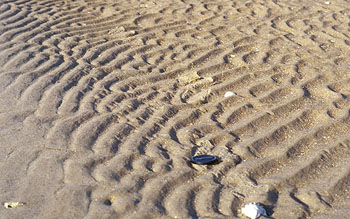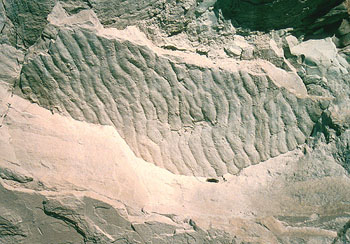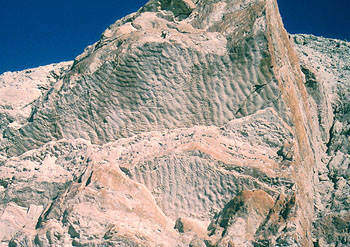
|
| When a wind or water current flows across loose sand, the sand is dragged along the bottom and frequently is piled up to form ripples and dunes. The main difference between a ripple and dune is size, with dunes being taller than about 10 cm. You have no doubt seen ripples and dunes at the beach (lake or ocean), along a sandy river bank, or in the desert. Sometimes tiny ripples form on silty sediment, and larger dunes form where very fast water currents flow over gravel.
Ripples and dunes are useful because they are fairly commonly preserved in the sedimentary record. Assymetrical ripples and dunes form when current flows in a single direction, as along a river bottom. Symmetrical ripples and dunes form where currents flow in two directions, as where waves wash back and forth. Preserved ripples and dunes thus provide clues as to whether a given sandstone was influenced by waves or unidirectional currents and, in the later case, they indicae which way the water flowed. See your text book for illustrations and more explanation. |
Go back to Sedimentary Rocks page
Return to Image Archive Home Page
![]()
|
|
|



